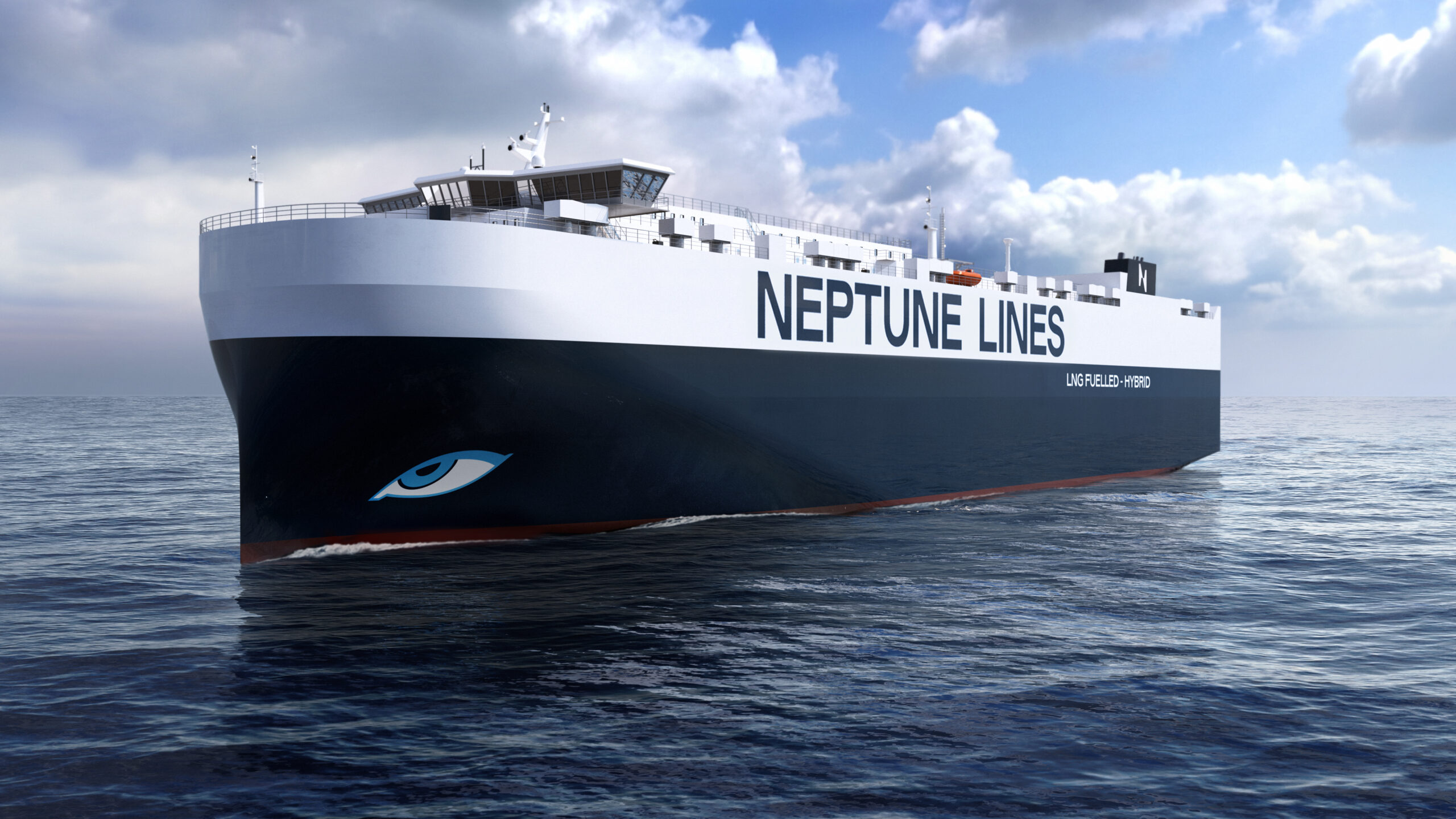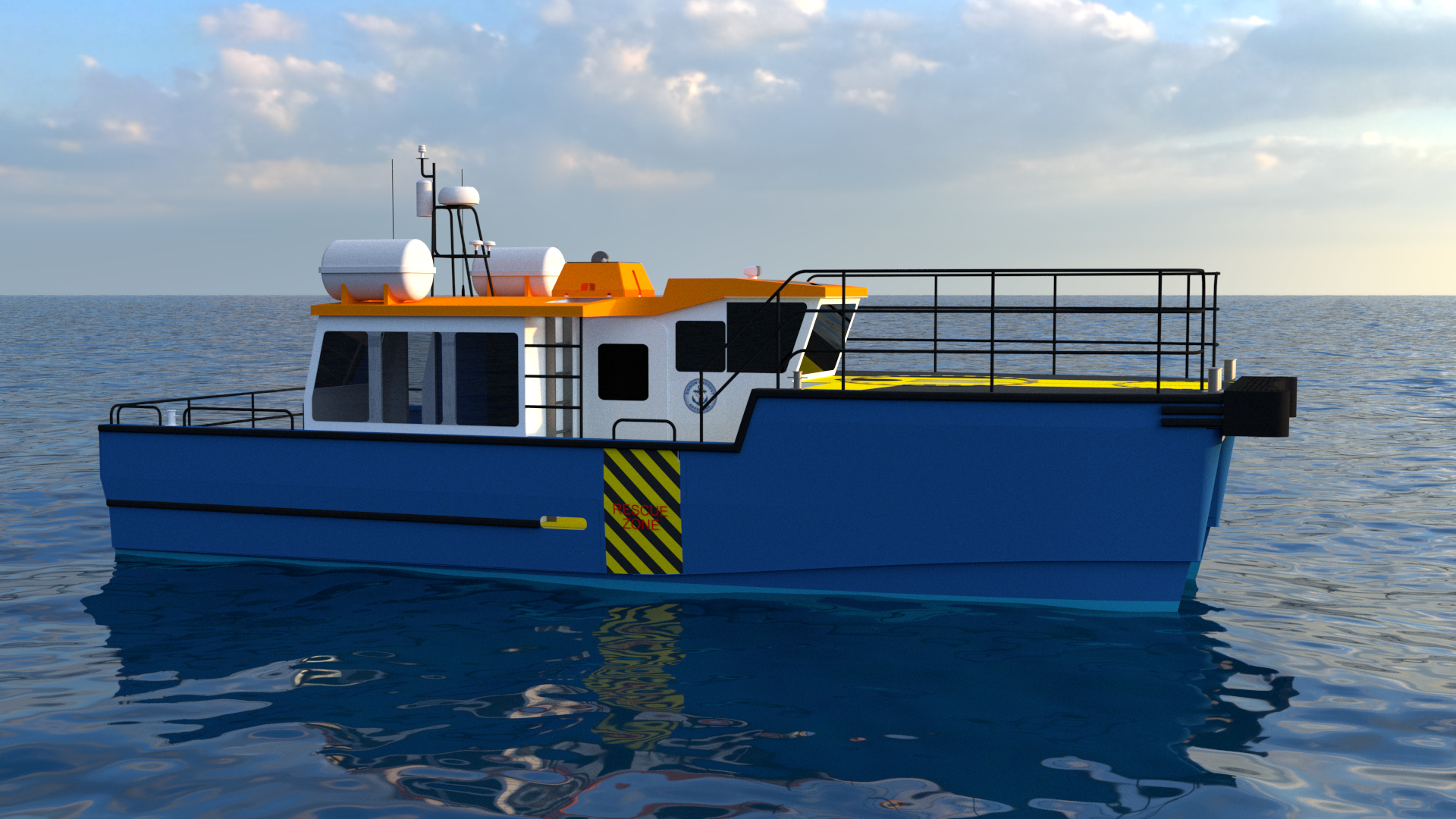The largest container vessels are designed for the greatest possible efficiency – maximum intake, minimum fuel consumption. Their smaller cousins, however, have not received the same level of attention – but this is beginning to change.
For the last few years, the titans of the container world have stolen the headlines; 18,000, 19,000 and even 20,000 TEU giants have arrived and reshaped the way goods are transported around the world. This has resulted in a need for more feeder services to keep these giants filled and reap the efficiency benefits of their size.
For the Korean shipbuilder Hyundai Mipo Dockyard (HMD) this was a good reason to look into the designs of feeder vessels and identify energy savings potential for this ship type as well. “With the Con-Green 2000 project we wanted to define the next generation of feeder vessels with maximum fuel efficiency, high quality, reliability and lower maintenance costs,” says C. G. Lim, Team Leader and Deputy General Manager of the ECO Hull Form Development Team at HMD. The yard asked several partners to participate in the project, including MAN Diesel & Turbo, Becker Marine Systems, and DNV GL. The hull form, propeller, general arrangement, midship section and scantling have been designed and optimized by HMD using their own proprietary software Hull Form Optimizer of Mipo (HOM) and Propeller Optimizer of Mipo (POM). The hull design of this Bangkok-max vessel was based on the new DNV GL rule set and the new IACS S11A and S34 requirements, and given approval in principle by DNV GL.
Efforts to optimize the hull and propeller have led to power savings of approximately 7.5 per cent. Cargo capacity was maximized by minimizing the weight of the vessel and optimizing the structural arrangements. A further capacity increase could be achieved through a tailored Intra Asian Service loading plan under the DNV GL RSCS (Route Specific Container Stowage) class notation, allowing the deck containers’ VCG (vertical centre of gravity) to be raised by 13.5 per cent compared to the standard North Atlantic route. As a result of optimizing the loading condition and LCB position (longitudinal center of buoyancy), the fore and aft peak tanks were removed.
Innovative rudder design
“Reducing fuel consumption is the most effective way to improve the emissions profile of a vessel, while, at the same time, improving competitiveness. The design includes a Cross Over Rudder (COR) developed by Becker Marine Systems (BMS), which will provide efficiency benefits over a wide range of loading conditions, speeds and real sea conditions with waves, winds and current,” says Lim.
The COR is a new design from BMS that includes a new fairing hub cap and a new rudder bulb design. The flow efficient hub cap (FEHC) and the rudder bulb are designed to reduce the required power and prevent propeller hub cavitation with no loss of manoeuvrability. The addition of the COR reduced the power requirement by another 2.8 per cent.
“BMS has a long history of cooperation with HMD and we were very pleased to have been asked to take part in this interesting project, “ says Henning Steffen, Naval Architect and Sales Manager from BMS. “We took the data provided by HMD and undertook CFD calculations to find the ideal COR rudder design for maximum efficiency. After seeing the model testing results, we are especially pleased with the power savings added by the COR over the whole range of operational speeds.”
Model tests confirm better performance
The design also incorporates the latest version of the MAN B&W 6S60ME-C10.5 main engine from MAN Diesel & Turbo (MDT). “At MDT, we are always interested in projects which can contribute to the development of innovative designs that benefit builders, owners and operators,” says Sang Bae Cha, Sales Promotion, MAN Diesel & Turbo Korea. “The Con-Green project was an excellent opportunity to feature the new MAN B&W 6S60ME-C10.5, which has increased power, improved fuel efficiency and reduced weight and dimensions, and also features new technologies like our fuel booster injection valve and top-controlled exhaust valve.” Model tests carried out in June at Force Technology in Denmark and witnessed by a DNV GL expert confirmed the added performance, with the speed at NCR (nominal continuous rating) power with 15 per cent sea margin improved by about 0.55 knots in comparison to the original design. Daily fuel oil consumption was improved by 12 to 16 per cent, depending on the vessel speed.
DNV GL will work with HMD on obtaining an approval in principle for the design, verify the performance of the design and assess the compliance of the design with environmental requirements including the EEDI. DNV GL will also provide technical support on the basic design in terms of stability, cargo loading/unloading, and the machinery arrangement concept and placement.
“The feeder market is gaining in importance, especially in the intra-Asian sector, and we are seeing a wave of innovation in this area as yards and designers look to maximize efficiency and reduce environmental impacts,” says Jai Oh Sun, responsible engineer for the Con-Green project at DNV GL – Maritime. “We are very pleased that HMD has chosen us to participate in the project and trusts our expertise in the container sector. We look forward to the future development of the design and its success in the market.”
HMD Con-Green 2500 and HMD Con-Green 3000 are now under development and will be released soon.
Image: the Cross Over Rudder by Becker Marine Systems reduces power requirements, contributing to ship efficiency over a wide range of operating conditions.
Ship Efficiency Review News
To contact the reporter responsible for this article, please email editor@fathom-mi.com


































